Last Updated on June 3, 2023 by Ellen
The Sarajevo genocide museum is an utterly depressing, yet necessary, place. For as long as people do evil acts, their negative examples will be used as reminders for the rest of us to stand up and do something about shockingly atrocious behavior.
That’s what’s so galling about the Bosnian War in the 1990s, and also other wars like Syria today — the international community did (and does) nothing to stop what was (and is) happening.
People in Bosnia – Sarajevo, Mostar, Srebrenica, everywhere – suffered genocide and crimes against humanity at the hands of self-righteous nationalists who seethed with ethnic hatred. The museum covers all of this in such a way that by the time I got to the last room that features what happened in Srebrenica, I was ready to run from the place with my hands over my head while screaming.
But that’s exactly the point, because hatred never goes away.
The Sarajevo genocide museum reminds us what could happen — again.
The first room in the Museum of Crimes Against Humanity and Genocide starts with a video called “The Ultimate Survival Guide.” The video segments cover everything about citizens’ lives in the city during the siege, from growing makeshift gardens, to crossing streets under sniper fire, to how to bury the dead without getting shot.
Just imagine living in your hometown with snipers firing at you every time you tried to cross the street.
The video features old news footage and also accounts of survivors who recall what life was like in a city held under siege for an astonishing three years and eight months.
I remember watching the war on TV as it happened. As with everything in TV media, you become immune to the constant reporting of the same thing. But put some years between then and now, and I’m horrified the world let this siege happen.
The video is more than an hour. If you’re an empathetic human being, the video likely will have made you tear up, or you may have at least sucked in your breath in astonished horror at some of the more graphic scenes.
The walls in this video room are covered with post-it notes left by visitors. People leave messages of support and hope and stick them to the wall. “Never again” was a message I saw often on the notes – and yet look at Syria, or Yemen, for example.
We humans still haven’t overcome hatred.
That makes visiting this museum all the more so incredibly sad.
Other rooms feature torture devices, weapons, personal items of people killed or injured, accounts of rape, torture, mass killings. The level of cruelty astounds me. I don’t know what kind of person dreams up these tortuous rituals or mass murder methods. One especially horrific display case holds items in dirt that were found in mass graves – including a human skull.
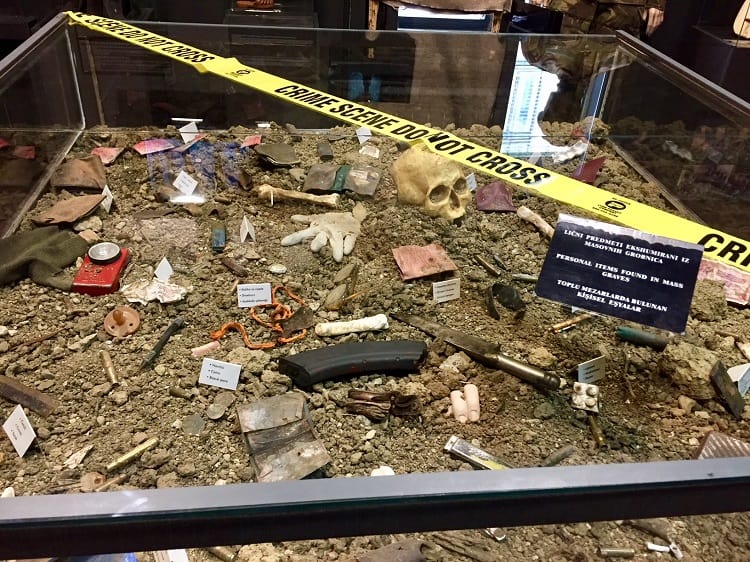
Another room features concentration camp models with dead prisoners. In one spot there is an old, nearly rotting chair in a display case. The chair was in the “White House” – a notorious torture place in the Omarska concentration camp.
The story goes, “Victims went through their sufferings on this chair. They were beaten to death while being tied to this chair. Every morning, a pile of dead bodies was the sight for the detained; those who died or were killed the night before were collected on a pile, then transported on trucks. At least 10 to 15 victims were killed each day, most of them by cruel and inhumane treatment…”
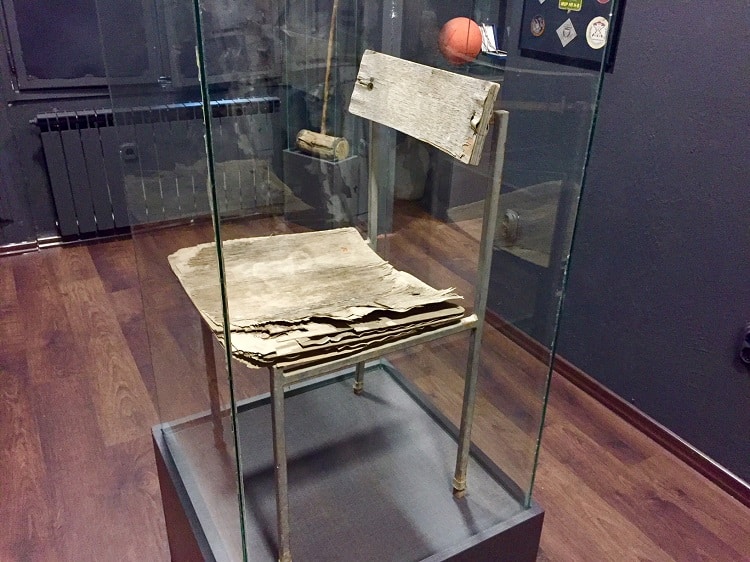
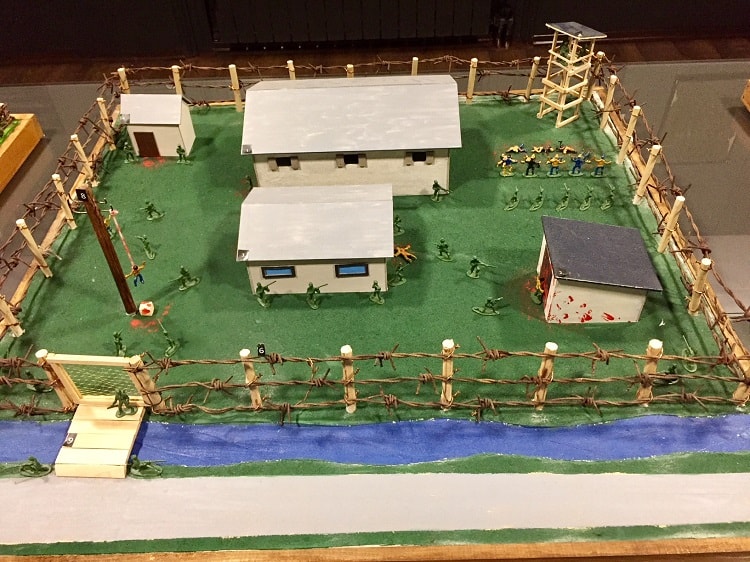
The museum is on the second floor. On the way up and down the stairs, visitors see a sign that reads in part, “Keeping the memory alive is an important factor in avoiding genocides and massacres in the future especially in times where separation and racism are slowing making their way back into the world… It is significant for every human to learn what hate can do… without this learning we are prone to allow it to happen again and again…”
Near that sign is a blown up picture of a rotting human hand with a watch, found in a mass grave after the war.
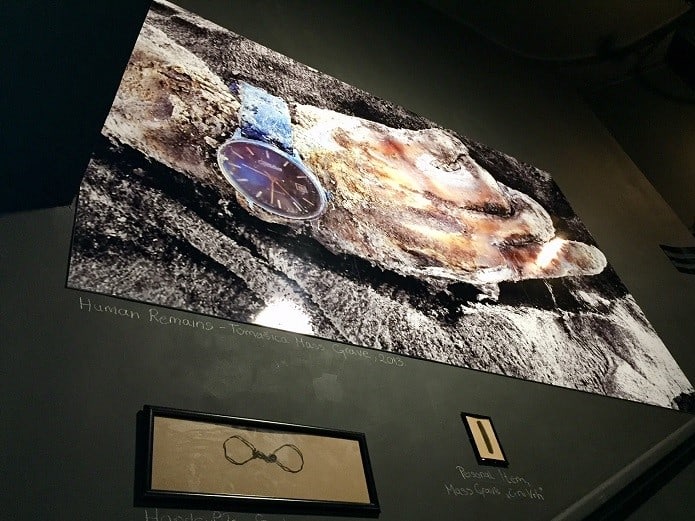
Graves are still found today. Some bodies may never be found.
The museum entry fee is 10 marks. There also is a donation box if you feel moved to leave more. There is no official website, but its Facebook page is here.
When I left museum and got back onto the street, some of the world carried on as if this horrible set of rooms – as if this history – didn’t even exist. Tourists enjoyed cafes on that block, young foreigners took selfies a million times down the street to get that perfect Instagram shot. It’s as if they have no idea how hate can ruin the world. Then there were the older, local people who walked around with a deadened, somewhat vacant look about them, as if they expected the hate they once witnessed could happen again at any moment.
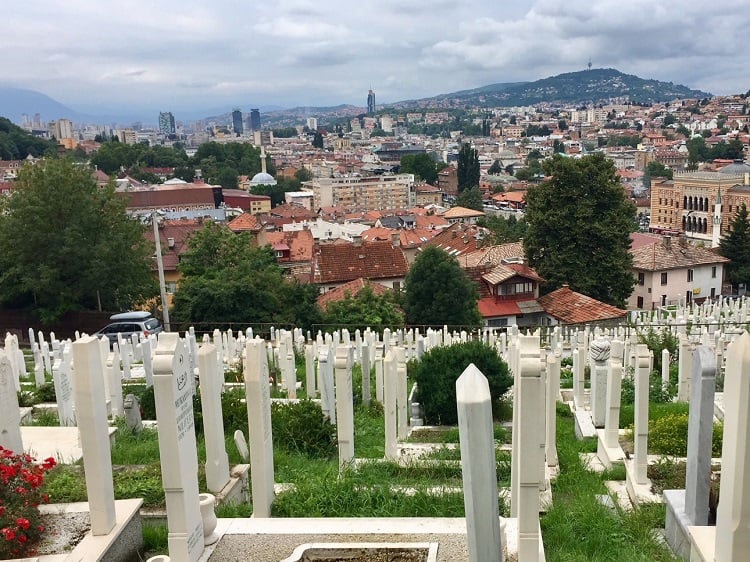
:-/

I was on Sarajevo during the war and I’we been in Museum hundred times. Thank you for these words and thank you for your understanding.
Than you, Alma. I learned so much at the museum. Also, I loved Sarajevo. ?✌️
Humans have been waring with each other since time began. So very sad. I don’t think it will ever end. ?